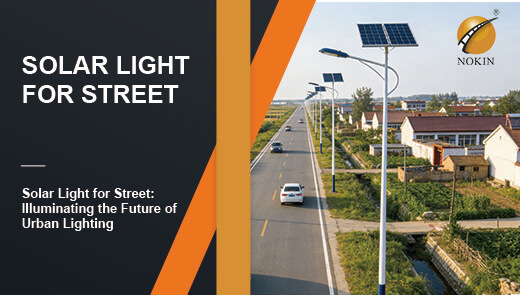How Long Do Solar Street Light Batteries Last?
During the procurement, installation and operation and maintenance of solar street lights, almost all users will ask the same question: "How many years can the battery of this street light last?"
The seemingly simple question hides a deep consideration of cost, efficiency and stability - as the "energy storage core" of solar street lights, the battery's lifespan directly determines the replacement cycle of the street light, the overall usage cost, and the reliability of night lighting.
Just imagine: If the battery is scrapped prematurely, even if the solar panels are in good condition, the street lights will fall into the predicament of "being exposed to sunlight during the day but not lighting up at night". Conversely, extending battery life not only reduces replacement costs but also lowers the labor costs for operation and maintenance, allowing the environmental advantages of solar street lights to truly be realized.
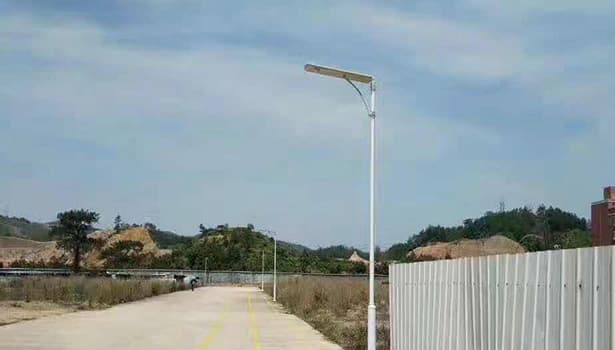
How Long Can the Solar Street Light Battery Last?
The service life of solar street light batteries is not a fixed value. It is affected by factors such as battery type and usage environment, and the overall range is between 3 and 8 years. If classified by battery material, the lifespan of different types varies significantly. For specific details, please refer to the following data:
|
Battery Type |
Core Features |
Service Life Range |
|
Lead-acid Battery |
Low cost, good low-temperature adaptability, but relatively short lifespan |
2 – 5 years |
|
Lithium-ion Battery (incl. LiFePO₄) |
Long lifespan, lightweight, currently the mainstream choice |
5 – 10 years |
Why is there such a big difference? This is directly related to the chemical structure of the battery and its charge and discharge cycle capacity. For instance, the electrode materials of lithium-ion batteries are more stable and can withstand a much higher number of charge and discharge cycles (typically over 1,000 times) than lead-acid batteries (about 300 to 500 times), thus having a longer lifespan.
5 Factors Affecting the Solar Street Light Batteries Lifespan
Battery Types for Solar Street Lights
Batteries of different types vary greatly in lifespan and performance due to differences in materials and structures. This is also why "choosing the right battery" is the first step to extending its lifespan. We make a detailed comparison of the current four mainstream types of solar street light cells through a table:
|
Battery Type |
Service Life |
Advantages |
Disadvantages |
Applicable Scenarios |
|
Lead-acid Battery |
2 – 5 years |
Low cost (only 1/3–1/2 of lithium batteries) Excellent low-temperature performance (-20℃ discharge) Sealed design, maintenance-free |
Heavy weight, high installation and transportation costs Contains lead, pollution risk Short lifespan |
Temporary lighting in areas with few charge/discharge cycles, limited budget, and low temperature (e.g., construction sites) |
|
Nickel-cadmium Battery |
3 – 6 years |
Strong durability and impact resistance Stable low-temperature discharge Moderate price |
Contains cadmium, a heavy metal pollutant “Memory effect” reduces capacity if not fully charged |
Early outdoor lighting (gradually being phased out) |
|
Nickel-metal Hydride Battery |
4 – 7 years |
No heavy metal pollution, environmentally friendly High-rate charge/discharge, supports sudden high-power use No memory effect |
Small capacity, only suitable for <100W street lights Poor high-temperature performance (capacity drops above 40℃) |
Small lighting systems such as garden lights and landscape lights |
|
Lithium Iron Phosphate (LiFePO₄) |
5 – 10 years |
Long lifespan, >2,000 cycles Excellent high-temperature performance (operates at 60℃) Lightweight (1/3 weight of lead-acid) Environmentally friendly, pollution-free |
High price, costly initial investment Requires dedicated charger with high compatibility |
Long-term lighting scenarios such as municipal roads, main roads, and expressway service areas |
In terms of lifespan and environmental friendliness, lithium iron phosphate batteries are currently the best choice. If the budget is limited, lead-acid batteries can be used as a transitional solution, but the replacement cycle needs to be planned in advance.
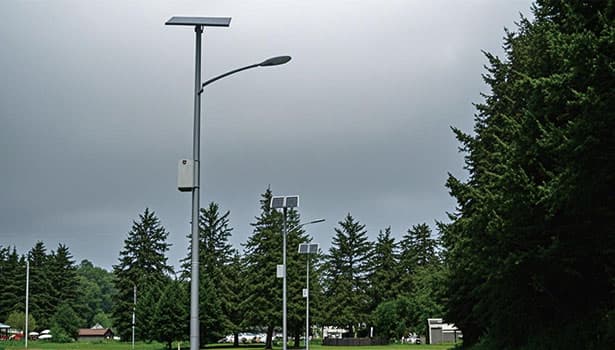
The Environmental Conditions Where Solar Street Lights are Located
Solar street lights are mostly installed outdoors. The environment exposed to wind and sun will directly accelerate battery aging. Among them, the following three types of environments have the most significant impact:
Extreme temperature
- High temperature (above 40℃) : It can cause the evaporation of battery electrolyte and the oxidation of electrode materials. For instance, the lifespan of lead-acid batteries at 60℃ will be shortened to half of that at normal temperatures. Although lithium iron phosphate batteries can withstand high temperatures, their capacity will also decline if the temperature exceeds 60℃ for a long time.
- Low temperature (below -10℃) : Lead-acid batteries will experience "crystallization" at low temperatures, clogging the electrodes pores and resulting in a decrease in charge and discharge efficiency; Nickel-cadmium batteries have relatively good low-temperature performance, but their capacity will also drop sharply below -20 ℃.
High humidity/rain
If the battery box is not sealed tightly, rainwater or dew may seep in, causing a short circuit between the positive and negative terminals of the battery and rusting of the terminal blocks. In mild cases, it may lead to charging failures; in severe cases, it may directly burn out the battery. In the rainy southern regions, due to high humidity, the proportion of batteries scrapped because of water ingress is over 30% higher than that in the north.
Dust/Pollutants
Although dust does not come into direct contact with the battery, it can cover the solar panels, reducing the solar energy absorbed by the panels and preventing the battery from being fully charged. When a battery is in a long-term "undercharged" state, it may experience "sulfation" (for lead-acid batteries) or "lithium dendrites" (for lithium batteries), thus shortening its lifespan.
The Maintenance of Solar Street Light Batteries
Many users believe that "solar street lights are maintenance-free", but they neglect the regular inspection of batteries, which is also an important reason for the premature scrapping of batteries. The following two maintenance details are the most easily overlooked:
Cleaning of solar panels
If solar panels accumulate dust, fallen leaves or bird droppings, their conversion efficiency will drop by 10% to 30%. For instance, a panel with a conversion efficiency of 20% May drop to 14% after accumulating dust, resulting in insufficient daily charging of the battery and keeping it in a "half-full" state for a long time, which naturally shortens its lifespan.
Suggestion: Clean the panel once a month. Wipe it with clean water and a soft cloth. Avoid scratching the surface with hard objects.
Terminal block inspection
If the terminals connecting the battery to the solar panel and the controller are loose or oxidized, it will cause unstable charging current and even lead to "false connection" - seemingly charging, but in fact, the battery has not received effective power.
Suggestion: Check the terminals once every quarter. If oxidation is found, gently sand them with sandpaper and then apply anti-rust agent.
Depth of Discharge
"Depth of Discharge (DOD)" refers to the ratio of the actual discharge of a battery to its rated capacity. For example, if a 100Ah battery discharges 50Ah, the depth of discharge is 50%.
Over-discharging (with a discharge depth exceeding 80%) is a key behavior that shortens battery life
- Lead-acid batteries: If each discharge exceeds 80%, the number of cycles will drop from 500 to less than 200, and the lifespan will be shortened by 60%.
- Lithium batteries: When the depth of discharge exceeds 90%, the number of cycles drops from 2,000 to 1,000, and the lifespan is halved.
Conversely, if the depth of discharge is controlled within 50%, the battery life can be extended by 30% to 50%. For instance, municipal street lights are usually set to the "nighttime power reduction" mode (reducing the brightness from 100% to 50% in the second half of the night), precisely to decrease the depth of discharge.
Quality of Solar Panels
High-quality solar panels can ensure that the battery is "fully charged every day", while inferior panels will cause the battery to be undercharged for a long time. The specific differences are reflected in the following two points:
Conversion efficiency
The conversion efficiency of high-quality panels can reach 18% to 22% (such as monocrystalline silicon panels), while that of inferior panels is only 12% to 15% (such as low-end polycrystalline silicon products). Under the same lighting conditions, high-quality panels can be fully charged in 4 hours, while low-quality ones may take 6 to 8 hours. On cloudy days, the batteries of solar street lights may not even be fully charged.
Weather resistance
The high-quality panel is made of tempered glass and anti-corrosion frame, which can resist hail and ultraviolet aging, and has a service life of more than 25 years. Poor-quality panel frames are prone to rust and the glass is easily broken. After 2 to 3 years of use, the conversion efficiency will decline, resulting in insufficient battery charging.
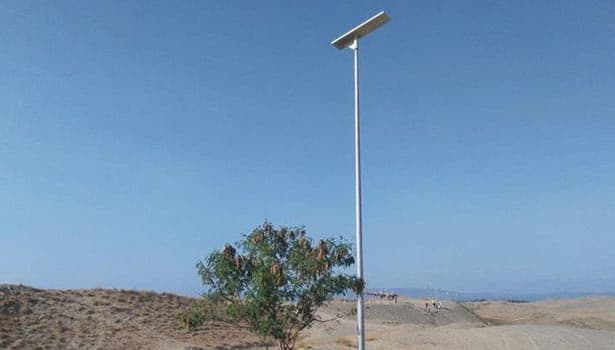
4 Maintenance Measures for Solar Street Light Batteries
Mastering the correct maintenance methods can extend the battery life by more than 30%. The following are four core maintenance measures that have been verified by the industry. They are simple to operate and highly effective:
Prevent Rainwater from Entering
- Inspect the battery box: Check every quarter whether the sealing rubber strips of the battery box are aged and whether there are cracks in the box body. If the rubber strips become hard or cracked, replace them in time (it is recommended to use EPDM rubber strips, which have strong aging resistance).
- Installation location: The battery box should be installed at a height of more than 30cm above the ground to prevent water accumulation and immersion. In the rainy areas of the south, a rain shelter can be installed on the top of the battery box.
Maintain Stable Charging and Discharging
Unstable voltage (overcharging or overdischarging) is one of the fastest ways to shorten battery life. Follow the following guidelines:
Select a controller with protection functions: Choose a solar charging controller with "overcharge protection" and "overdischarge protection", which is crucial for stable power management. Refer to these parameter settings:
Lead-acid battery: The overcharge protection voltage is set at 13.8V, and the overdischarge protection voltage is set at 10.5V.
Lithium-ion batteries (such as LiFePO4) : The overcharge protection voltage is set at 3.65V per cell, and the overdischarge protection voltage is set at 2.5V per cell.
Avoid additional high-power loads: Do not add any extra equipment (such as surveillance cameras, billboards) to solar street lights at will. These devices can cause a sudden surge in battery discharge current, disrupt the original charge and discharge balance, and damage the stability and lifespan of the battery.
Control the Working Temperature
Extreme temperatures, whether high or low, will reduce battery capacity and lifespan. Adapt maintenance to your climate
Cooling solutions for high-temperature areas: In regions with hot climates (such as deserts and tropical areas), wrap the battery box with heat insulation cotton or use a ventilated battery box with heat dissipation holes to reduce heat accumulation caused by direct sunlight. When the ambient temperature exceeds 45℃, a small solar fan can be installed inside the box to accelerate heat dissipation.
Insulation in low-temperature regions: In cold climates (such as continental temperate zones and high-latitude regions), use "low-temperature-specific" lead-acid batteries (with anti-freezing electrolytes to prevent crystallization at low temperatures). For lithium-ion batteries, insulating cotton should be pasted inside the battery box to ensure that the working temperature remains above -10℃ in winter and to prevent sudden capacity drops.
Reduce the Charge and Discharge Cycles
Each charge and discharge cycle will slightly wear out the battery. Use the following strategies to reduce unnecessary loops:
Set the lighting schedule wisely: Adjust the on/off time of solar street lights according to actual needs to avoid unnecessary discharge. For example, in the suburbs, use the "segmented brightness mode" :
19:00-23:00: Full-power lighting (to meet the needs of pedestrians and vehicles during peak night hours).
23:00-6:00: Reduced power lighting (only basic safety lighting is maintained).
This shortens the high-power discharge time and reduces the charge and discharge cycle.
It adopts dual control (light sensor + timer) : combining two control modes, namely the light sensor (automatically turning on/off based on natural light intensity) and the timer (preset fixed hours). This can prevent the light from turning on prematurely on cloudy days or at night, ensuring that the battery only discharges when real lighting is needed.
4 Tips to Extend the Solar Street Lights Battery Life
In addition to basic maintenance, the following four advanced techniques can further extend the battery life of solar street lights, shifting from "passive maintenance" to "active management" :
Give Priority to Lithium Iron Phosphate Batteries
Although the initial procurement cost of lithium iron phosphate batteries is 50% to 100% higher than that of lead-acid batteries, their lifespan is 2 to 3 times that of lead-acid batteries, and their overall cost is lower. In addition, lithium iron phosphate batteries are lightweight, which can save labor costs during installation, and are environmentally friendly and pollution-free, in line with the current policy orientation.
Match the Appropriate Battery Capacity
"Excessive capacity" will cause the battery to be undercharged for a long time, while "insufficient capacity" will lead to frequent deep discharges. Both will shorten the lifespan. The correct method for calculating capacity is:
Battery capacity (Ah) = Street light power (W) × lighting time (h) ÷ system voltage (V) ÷ depth of discharge (suggested 0.5)
For instance, for a 100W solar street light that has been illuminated for 8 hours, with a system voltage of 12V and a discharge depth of 0.5, the battery capacity = (100×8) ÷12÷0.5≈133Ah. It is recommended to choose a 150Ah battery (leaving a 10% margin).
Regularly Monitor the Health Status of the Battery
The following two indicators can be used to determine whether the battery needs to be replaced
- Voltage detection: Use a multimeter to measure the open-circuit voltage of the battery (when not charged). The normal voltage of lead-acid batteries is 12.5V-13.0V. If it is lower than 12.0V, it indicates that the capacity has decreased by more than 50%. The normal voltage of lithium batteries (3-series) is 11.1V-11.4V. If it is lower than 10.5V, they need to be replaced.
- Discharge test: Disconnect the solar panel, allow the street lightto operate normally, and record the time from full lighting to off. If the actual lighting time is less than 50% of the designed time, it indicates that the battery can no longer meet the requirements.
Suggestion: Conduct a voltage test every six months and a discharge test once a year to promptly identify faulty batteries.
Standardized Recycling of Scrapped Batteries
If used batteries are discarded at will, they will not only pollute the environment but also may damage soil and water sources due to the leakage of the electrolyte inside. At present, all legitimate solar street light manufacturers offer "used battery recycling services", When you replace batteries, you should choose manufacturers that offer recycling services, which is both environmentally friendly and compliant.
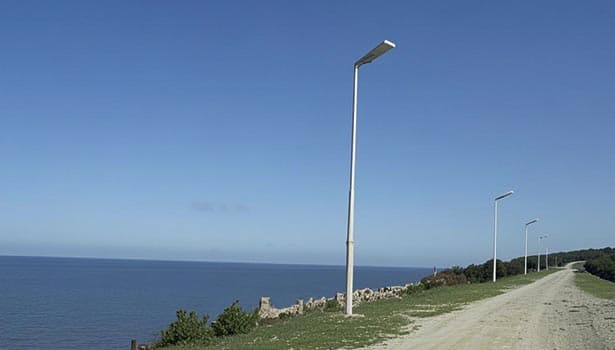
The lifespan of solar street light batteries is never a "fixed value", but a "manageable variable". By choosing the right battery type (such as lithium iron phosphate), doing a good job in daily maintenance (such as cleaning the panel and checking the seal), and controlling the usage intensity (such as the depth of discharge), the battery life can be extended from 3 years to 8 years or even longer.
If you have any questions about battery selection, maintenance or life assessment, it is recommended that you consult a professional solar street light manufacturer to obtain a personalized solution - after all, professional guidance is the "shortest path" to extend battery life.

